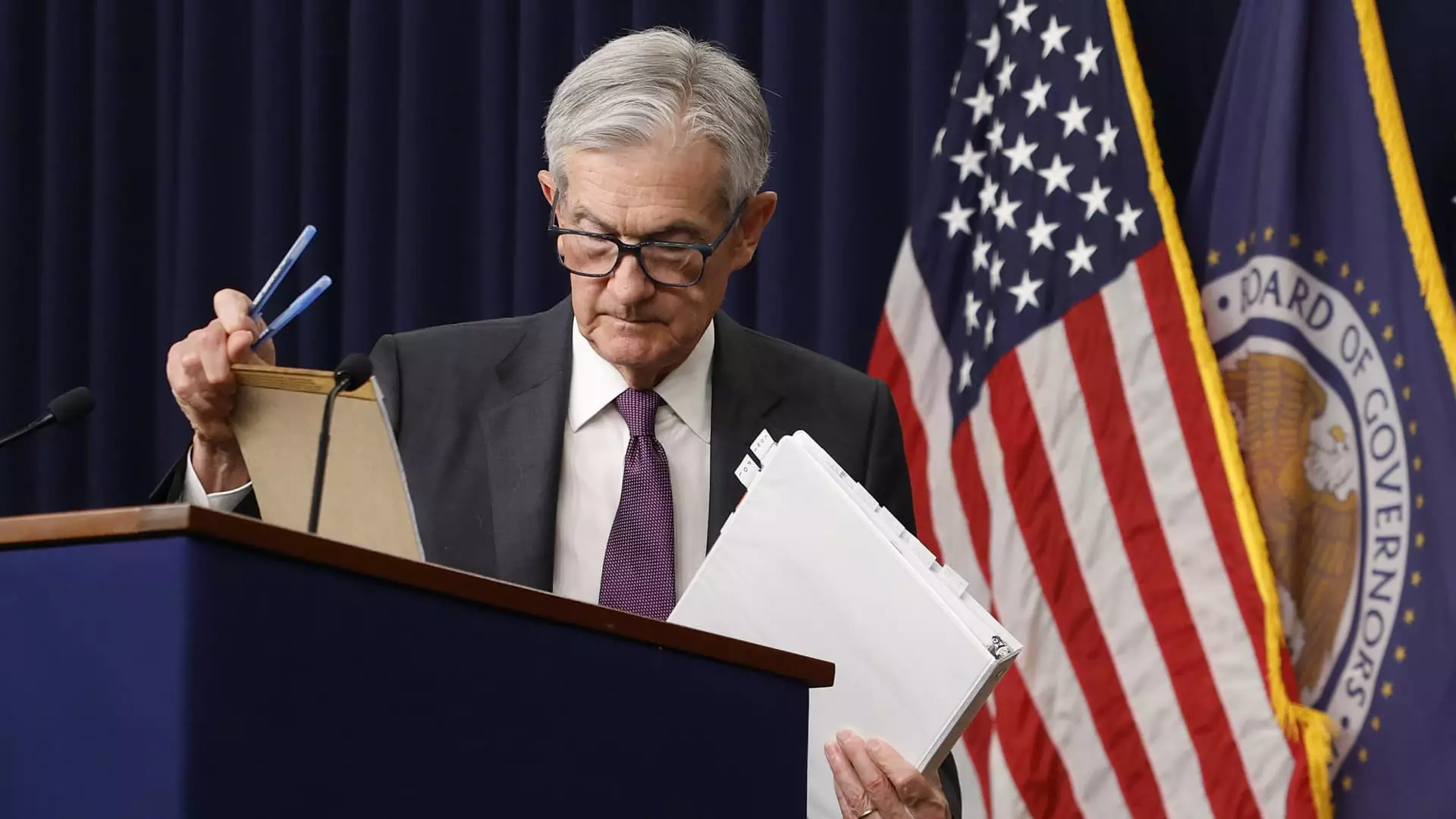In a bold and thought-provoking address, Federal Reserve Chair Jerome Powell has simultaneously illuminated and complicated the Federal Reserve’s pivotal role in steering the economy, particularly in light of President Trump’s turbulent trade policies. Powell’s latest remarks signal that the central bank is teetering delicately between two paramount goals: achieving stable prices and fostering robust economic growth. While his speech was laden with economic jargon and forecasts, the underlying message was starkly clear: The Fed’s traditional dual mandate is at risk of becoming a contentious battleground.
The dual-mandate framework places emphasis on maintaining full employment and stable prices. Yet, as tariffs loom, the potential for conflict between these objectives escalates. Powell’s acknowledgment of this “challenging scenario” during a recent speech was not merely a rhetorical flourish; it reflects the precarious nature of economic governance amidst external shocks. His warning that tariffs could disrupt the delicate balance between inflation control and economic growth raises serious questions about how effectively the Fed can navigate the stormy waters of fiscal policy.
The Tariff Quandary: Economic Hurdles Ahead
At the core of Powell’s message lies the contentious impact of tariffs—essentially taxes on imported goods. While they can ostensibly shield local jobs, their historical correlation with rising prices has been inconsistent. Powell’s candid admission that tariffs “are likely to move us further away from our goals” is a striking reminder that the path of protectionism often leads to unintended consequences. With growing inflation rates anticipated due to added costs from tariffs, the Fed must grapple with an increasingly intricate cost-benefit analysis.
The fundamental challenge is not merely about managing rates but rather understanding the deeper ramifications of these tariffs on the consumer landscape. The ultimate question is whether the Fed can maintain its credibility amidst rising prices while also observing a slowdown in economic growth. Powell foresees a clashing reality where the Fed’s policies necessitate an acute focus on differing time horizons for various economic indicators. The disparity between short-term and long-term outcomes could potentially undermine confidence in the Fed’s interventions.
The Uneven Road to Recovery: Signs of Slowing Growth
Recent economic indicators have surfaced that support Powell’s cautious outlook. With the first-quarter GDP expected to reveal stagnant growth, progress appears increasingly uncertain. Despite some bright spots, such as a 1.4% surge in retail sales largely driven by consumers preemptively buying vehicles amid anticipated tariffs, the overall picture remains bleak. The dichotomy between robust consumer spending in specific sectors and overall lackluster growth serves as a stark reminder of an economy grappling with underlying pressures.
The Federal Reserve’s apprehension around rising inflation correlates strongly with consumers’ expectations. Powell’s insistence on anchoring inflation expectations is a clarion call for those who fear that persistent tariff-induced inflation could spiral out of control. Responding to immediate pressures by altering interest rates becomes an even more intricate process when growth indicators hint at a recessionary environment. The idea of whether to increase or decrease rates might hinge upon more than just economic metrics; it’s about maneuvering through a landscape fraught with uncertainty.
The Markets Respond: Volatility Is Here to Stay
As Powell laid bare the complexities of the Fed’s situation, market reactions provided immediate feedback. Stock prices faltered and Treasury yields fluctuated in response to his comments, signaling an unsettling realization among investors: uncertainty is the new norm. With rising inflation expectations and market speculation of potential rate cuts looming on the horizon, investors find themselves in a precarious position caught between the Fed’s cautious optimism and the stark realities of the prevailing economic landscape.
The importance of market confidence cannot be overstated as it directly impacts consumer behavior and investment decisions. The Fed’s policy stance, coupled with external influences such as tariffs, creates a scenario where investor faith is tested daily. Maintaining stability in the markets becomes not just a question of policy tools but a moral responsibility to shield the economy from external shocks. For Powell, the challenge lies in crafting a narrative that assures the markets while equipping the Fed to act decisively amidst unpredictable winds of change.
Ultimately, Powell’s address is a clarion call to reconsider the tools and tactics at the Federal Reserve’s disposal. The interplay between inflation control and economic growth demands a reevaluation of traditional approaches, particularly as evolving external factors like tariffs redefine the foundational elements of monetary policy. The road ahead for the Federal Reserve is fraught with challenges, but it is also ripe with opportunities for innovative thinking. In navigating an increasingly complex economic environment, the need for bold policy responses has never been more pressing.

